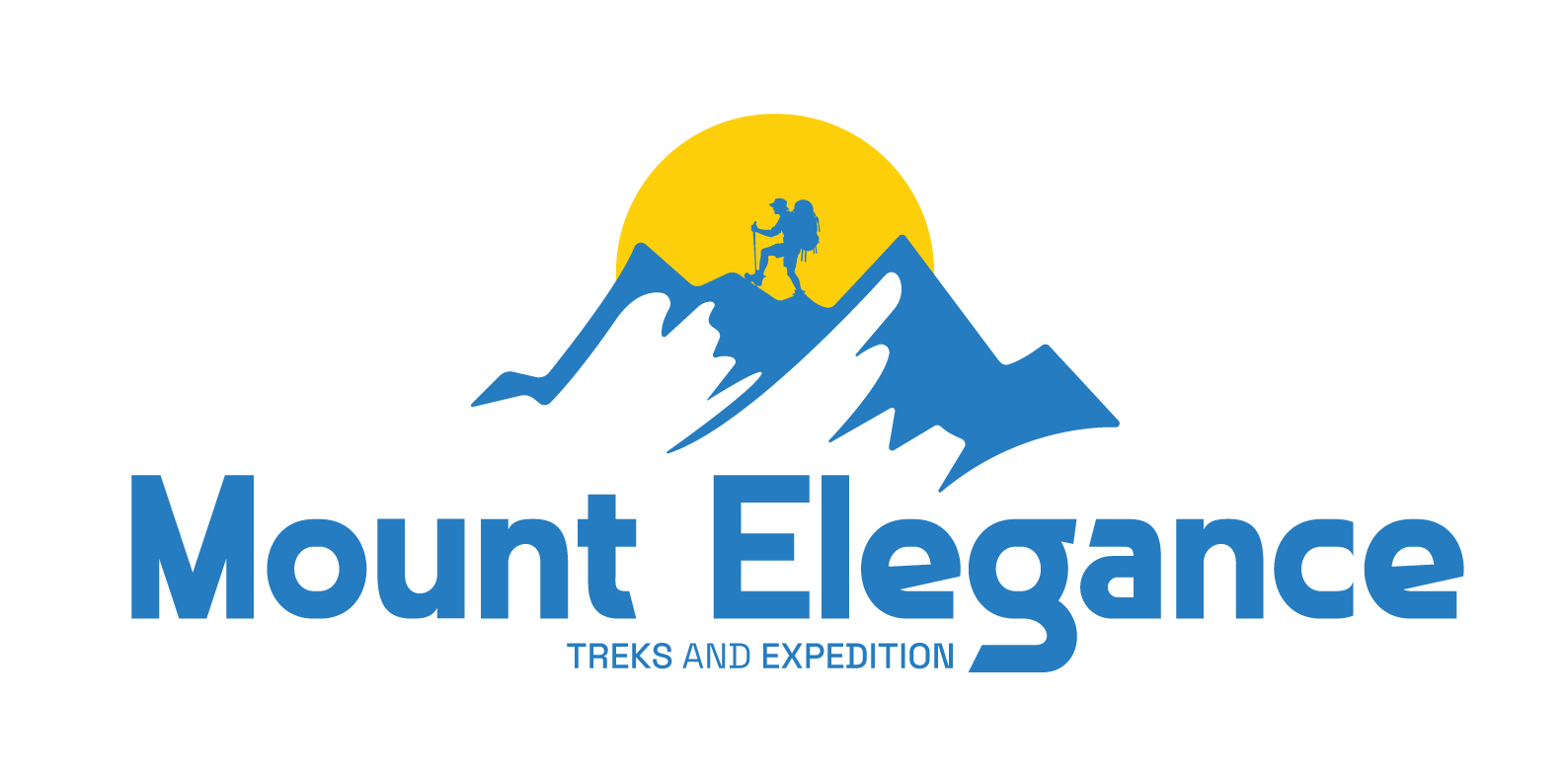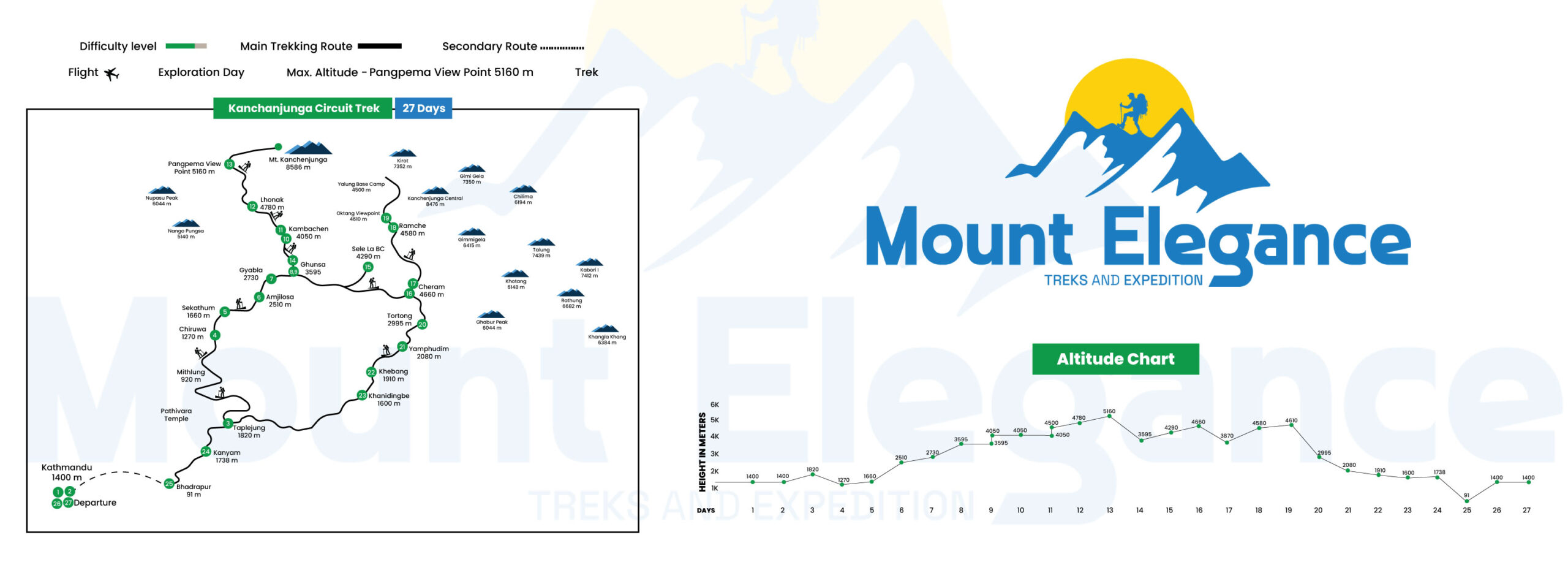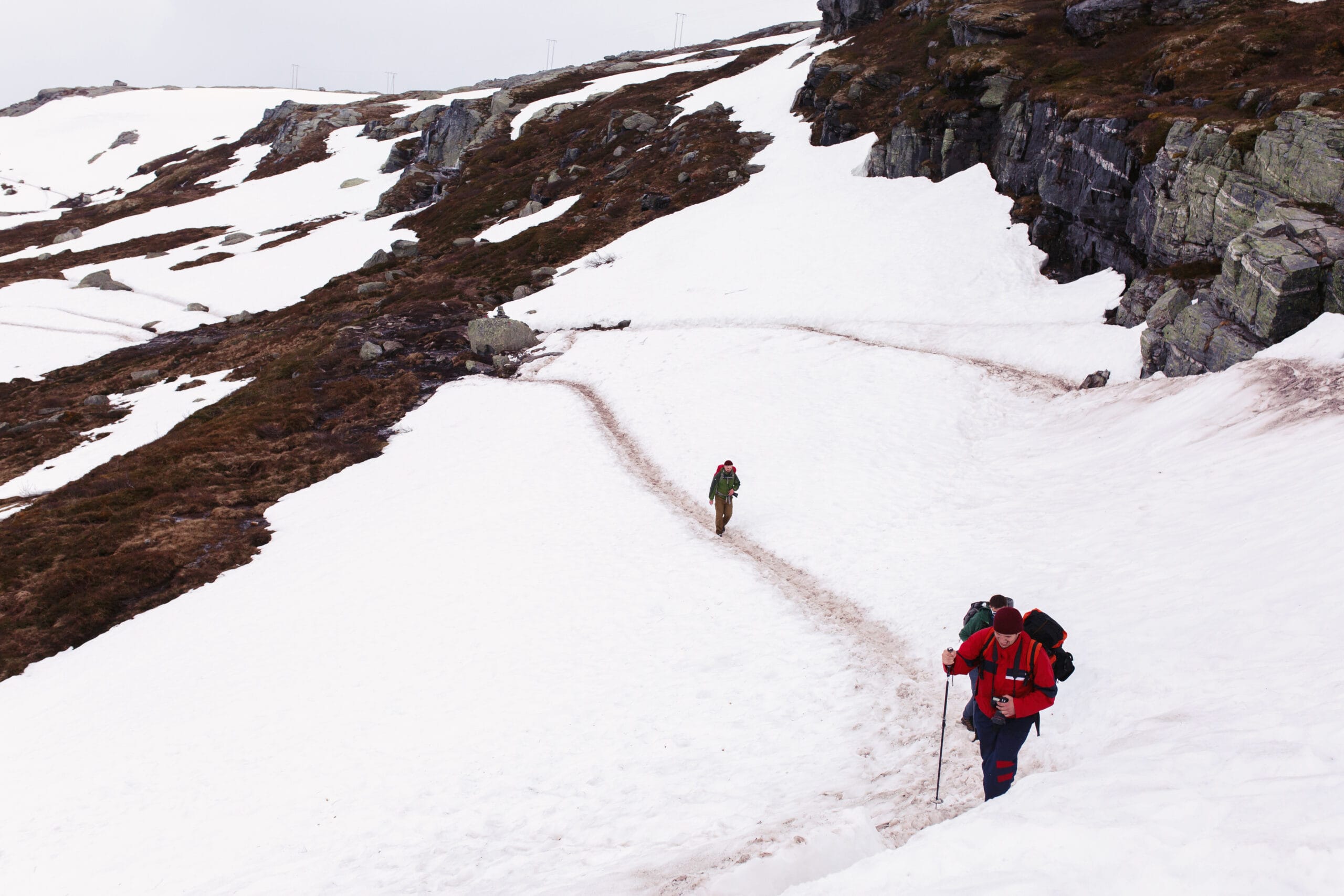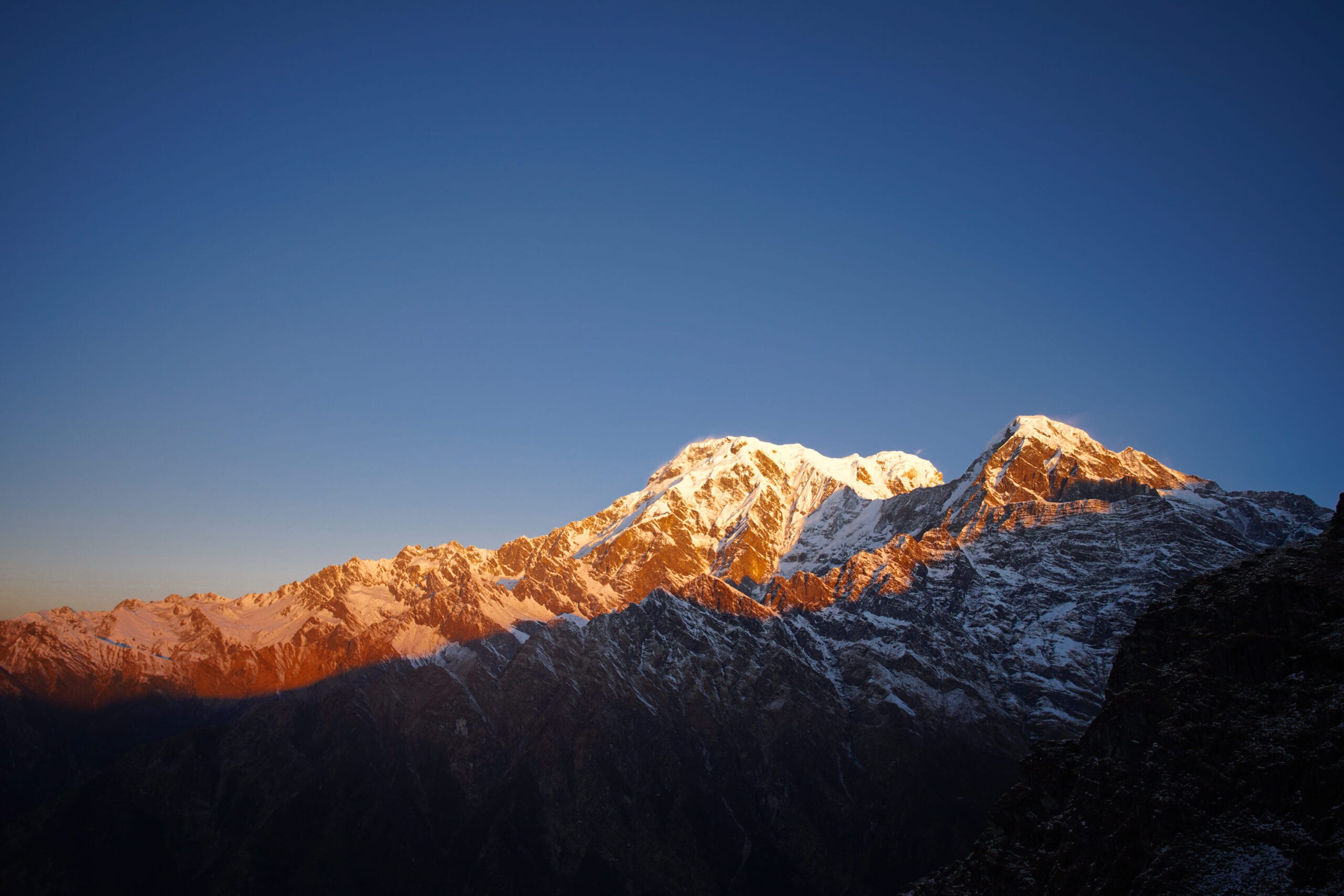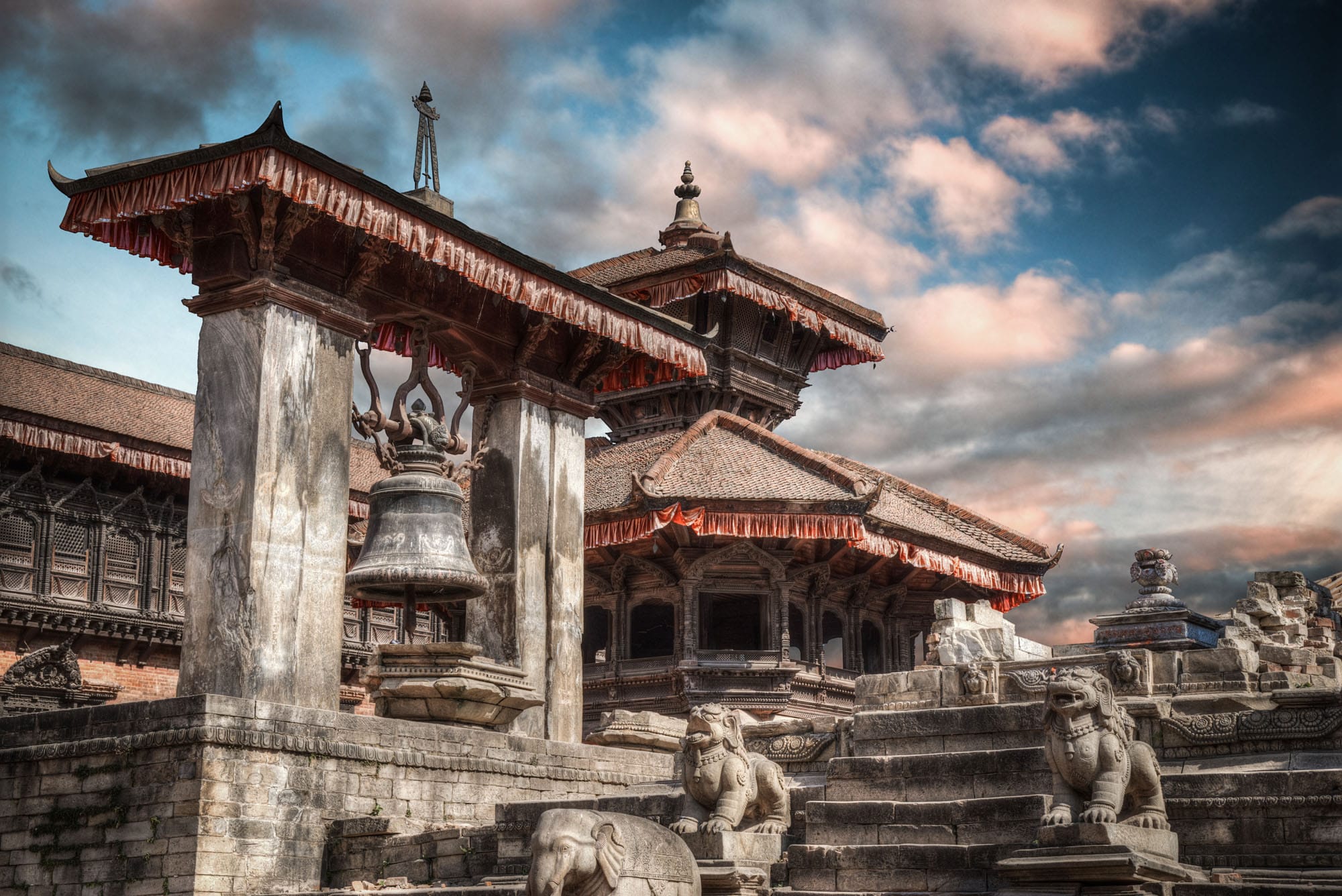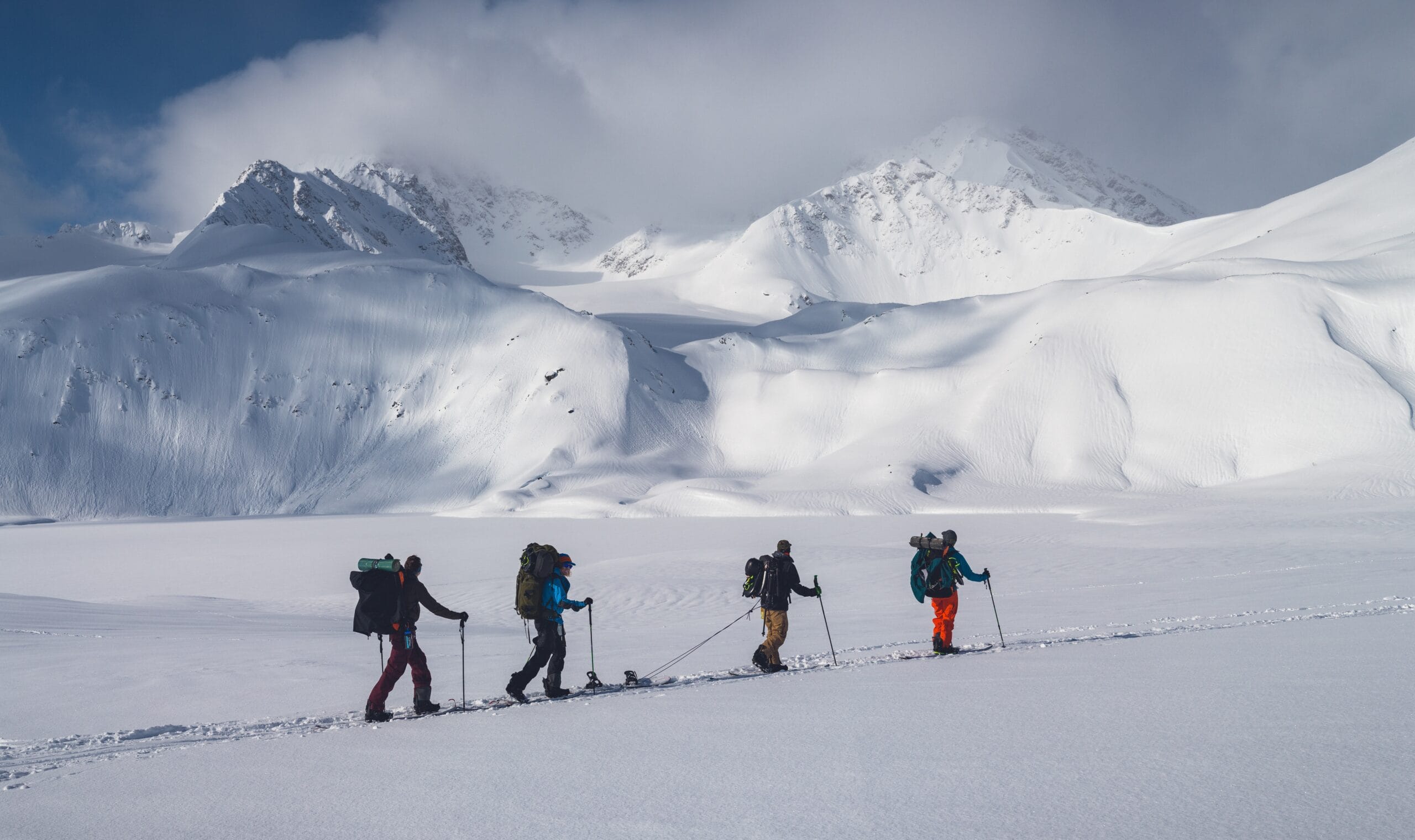Kanchenjunga Circuit Trek – 27 D
Best Season
Highest Altitude
Trip Overview
Kanchenjunga Circuit Trek – 27 Days offers a rare and unforgettable journey into one of Nepal’s most remote and pristine trekking regions. As you make your way toward both the North and South Base Camps of Kanchenjunga the world’s third-highest peak at 8,586 meters — you’ll be rewarded with dramatic landscapes that range from lush rhododendron forests and deep river valleys to high alpine meadows and glacial moraines.
This off-the-beaten-path trek immerses you in the rich cultural heritage of the Limbu, Rai, and Tibetan-influenced communities, where hospitality remains deeply rooted in tradition. The trail winds through the Kanchenjunga Conservation Area, home to rare wildlife like red pandas, snow leopards, and Himalayan black bears. Far from the crowded trails of Everest or Annapurna, this trek is perfect for those seeking solitude, adventure, and raw Himalayan beauty. With experienced guides, well-paced acclimatization, and locally run teahouses, the Kanchenjunga trek is as rewarding as it is challenging.
Trip Highlights of Kanchenjunga Circuit Trek – 27 Days
Experience breathtaking views of Mt. Kanchenjunga (8,586m) from both the North and South Base Camps.
Trek through remote, unspoiled landscapes with rhododendron forests, alpine meadows, and glacial valleys.
Encounter rich local cultures including Limbu, Rai, and Tibetan Buddhist communities.
Cross high mountain passes like Sele La (4,290m) with panoramic Himalayan vistas.
Spot rare wildlife in the Kanchenjunga Conservation Area, including red pandas and snow leopards.
Enjoy a quiet, off-the-beaten-path adventure far from the busier Everest and Annapurna trails.
Take part in a challenging and rewarding trek that typically spans 21–24 days in total.
Porter service (up to ~15 kg), WiFi and charging available in most lodges.
This trek offers not just a physical challenge but also a journey through one of the world’s most spectacular landscapes.
Essential Items:
- Base Layers: Thermal top and bottom
- Insulation: Fleece jacket and down jacket
- Outer Layer: Waterproof jacket and pants
- Trekking Clothes: Some pairs of trekking pants, quick-dry shirts
- Footwear: Trekking boots, camp shoes/sandals
- Headwear: Sun hat, warm hat, neck gaiter
- Hand-wear: Lightweight gloves, insulated gloves
- Accessories: Sunglasses, sunscreen, lip balm , headlamp with extra batteries , trekking poles ,50-60L backpack + daypack
- Personal Items: Hygiene essentials (toothbrush, toothpaste, wet wipes), Quick-dry towel ,Water bottle or hydration system (2L capacity), Snacks (energy bars, nuts)
- Medical Kit: Personal medications, basic first aid, altitude sickness pills
- Documents: Passport, trekking permits, travel insurance
- Optional: Camera, power bank, Lightweight sleeping bag
Refer to this for the full Equipment Checklist
Itinerary
Trek Duration: N/A
Meals: B
Highest Altitude: 1,400 m / 4,593 ft
Kathmandu Valley, cradled at 1,400 meters, offers a mild elevation ideal for easing into Nepal's mountainous terrain. Though far from the heights of the Himalayas, it sets the stage with views of distant peaks and a rich cultural immersion.
The capital buzzes with energy—ancient temples, bustling markets, and vibrant streets give a glimpse into the heritage you'll encounter during your trek. This is a day for rest, anticipation, and preparation. In the evening we will have brief discussion of our trip.
Trek Duration: N/A
Meals: B
Highest Altitude: 1,400 m / 4,593 ft
Remaining at the same altitude, Kathmandu continues to serve as your cultural anchor. From Swayambhunath to Boudhanath and Durbar Square, the city's spiritual and historical sites provide deeper context to your upcoming mountain journey.
It’s also a crucial day to check gear, finalize permits, and mentally prepare for the remoteness ahead. While physically low, the significance of this day in setting expectations is high.
Trek Duration: 5–6 hours
Meals: B/L/D
Highest Altitude: 1,820 m / 5,971 ft
As you gain elevation en route to Taplejung, the journey offers a dramatic change in scenery—from the Terai plains to terraced hills blanketed in mist. You’ll feel the gradual ascent in both temperature and terrain.
At 1,820 meters, Taplejung introduces you to the first real sense of mountain life in eastern Nepal. The hills grow steeper, the air cooler, and the landscapes more lush and rural.
Trek Duration: 5–6 hours
Meals: B/L/D
Highest Altitude: 1,270 m / 4,166 ft
Though the elevation dips slightly to 1,270 meters, the trek leads you along the banks of the Tamor River through vibrant subtropical forests and cardamom plantations. The trail’s lushness offers a peaceful start to the expedition.
Chiruwa, a cozy village, marks the true beginning of the trail into Kanchenjunga Conservation Area. It’s rich in Limbu culture and is surrounded by fertile hills and cascading waterfalls.
Trek Duration: 6–7 hours
Meals: B/L/D
Highest Altitude: 1,660 m / 5,446 ft
Climbing slightly higher, Sekathum rests where two rivers converge, creating a symphony of rushing glacial water. The trail transitions into narrower gorges, signaling the first hint of ruggedness.
This is where you start to feel nature’s raw power—stone paths, steep ridges, and more remote surroundings. The night is spent under the echo of the Ghunsa Khola river.
Trek Duration: 5–6 hours
Meals: B/L/D
Highest Altitude: 2,510 m / 8,235 ft
As you reach over 2,500 meters, the air thins slightly and the forests grow denser with bamboo and pine. The trail is steep and narrow, often hugging cliffs above roaring rivers.
Amjilosa is a small Tibetan village tucked into a forested slope. It's remote, peaceful, and marks your true entry into alpine trekking territory.
Trek Duration: 5–6 hours
Meals: B/L/D
Highest Altitude: 2,730 m / 8,957 ft
At Gyabla, you’ll be immersed in an alpine climate surrounded by dramatic cliffs and thick rhododendron forests. The elevation allows for cool mountain air and clearer skies.
This is one of the most scenic days with gushing waterfalls and rocky outcrops. The journey to Gyabla brings both isolation and raw Himalayan beauty.
Trek Duration: 4–5 hours
Meals: B/L/D
Highest Altitude: 3,595 m / 11,795 ft
Ghunsa sits at nearly 3,600 meters and serves as the cultural heart of the Kanchenjunga trail. The altitude increase is significant, and you’ll feel it in your breath and pace.
A traditional Sherpa village, Ghunsa offers wooden lodges, Buddhist prayer flags, and yak pastures. This is a pivotal stop for rest and acclimatization before going higher.
Trek Duration: 5–6 hours
Meals: B/L/D
Highest Altitude: 4,050 m / 13,287 ft
The optional hike above Ghunsa reaches around 4,050 meters, testing your endurance while helping your body adjust. The views of Jannu and the surrounding snowfields are magnificent.
Returning to Ghunsa after the day hike allows your body to adapt without the stress of altitude gain overnight. This rest-acclimatize combo is crucial for the high passes ahead.
Trek Duration: 5–6 hours
Meals: B/L/D
Highest Altitude: 4,050 m / 13,287 ft
Continuing above 4,000 meters, you’ll traverse exposed terrain often affected by past landslides. It’s a rugged and rewarding journey through an expansive glacial valley.
Kambachen is a windswept outpost surrounded by dramatic cliffs and icy peaks. Nights are cold, and the sky often dazzles with starlight unmarred by light pollution.
Trek Duration: 3–4 hours (round trip)
Meals: B/L/D
Highest Altitude: 4,500 m / 14,764 ft
A side hike to 4,500 meters provides panoramic views of the Kanchenjunga range and a critical boost to your acclimatization profile. The walk is steep but visually stunning.
You’ll return to Kambachen for another night of rest. The body adjusts here to the challenges of high-altitude trekking before the final approach to base camp.
Trek Duration: 5–6 hours
Meals: B/L/D
Highest Altitude: 4,780 m / 15,682 ft
The barren glacial landscape to Lhonak feels otherworldly. At nearly 4,800 meters, you’ll be walking alongside icy moraines with sweeping views of Chang Himal and Kirat Chuli.
Lhonak is a remote and exposed settlement where wind, silence, and sky dominate. It’s the final stop before the push to North Base Camp.
Trek Duration: 6–7 hours (round trip)
Meals: B/L/D
Highest Altitude: 5,160 m / 16,929 ft
Pang Pema, at 5,160 meters, is the highest point of the trek. It rewards your endurance with a jaw-dropping view of the north face of Mt. Kanchenjunga—the third-highest peak in the world.
The glacier below crackles in the silence, and colorful prayer flags flutter in the cold breeze. It’s a sacred, humbling place where nature’s magnitude is overwhelming.
Trek Duration: 6–7 hours
Meals: B/L/D
Highest Altitude: 3,595 m / 11,795 ft
Returning to Ghunsa brings relief as oxygen levels increase. The descent allows the body to recover after intense exposure to extreme altitude.
The route back offers new perspectives and deeper appreciation for the terrain conquered. Ghunsa feels like a welcoming home after days in the harsh alpine wilderness.
Trek Duration: 5–6 hours
Meals: B/L/D
Highest Altitude: 4,290 m / 14,075 ft
Today’s trail ascends sharply through dense pine and rhododendron forests to reach Sele Le, a remote ridge camp nestled at over 4,200 meters. The shift from village paths to wilderness routes marks the beginning of a more isolated section of the trek.
The silence is profound, broken only by wind through the trees and the crunch of your boots. With stunning views of surrounding valleys and distant peaks, this high-altitude camp is a prelude to the crossing of Himalayan passes.
Trek Duration: 7–8 hours
Meals: B/L/D
Highest Altitude: 4,290 m / 14,075 ft
Crossing over the Sele La (4,290 m) and Sinion La (4,660 m) passes, you reach some of the most panoramic vantage points of the trek. These high mountain passes test your stamina and reward you with 360° views of the Kanchenjunga and Makalu ranges.
After crossing the windy ridges, the trail drops to Cheram, a peaceful settlement tucked into a glacial valley. The sense of achievement after crossing multiple passes is matched only by the serene setting of your campsite.
Trek Duration: N/A (Rest day)
Meals: B/L/D
Highest Altitude: 3,870 m / 12,696 ft
Though a rest day, you may take a short acclimatization hike to nearby ridges. At 3,870 meters, Cheram is a scenic plateau offering dramatic landscapes of the Yalung Glacier and peaks in every direction.
The body recovers here before the final push to the South Base Camp. It's also a day to soak in the silence, reflect on the trek so far, and watch yak caravans pass by on age-old trade trails.
Trek Duration: 5–6 hours
Meals: B/L/D
Highest Altitude: 4,580 m / 15,026 ft
As you climb to Ramche, the terrain becomes increasingly desolate and windswept. You are now surrounded by towering rock faces and shimmering white glaciers.
At 4,580 meters, Ramche is your final camp before reaching the South Base Camp. The night sky here is dazzling, revealing a ceiling of stars with zero light pollution.
Trek Duration: 6–7 hours (round trip)
Meals: B/L/D
Highest Altitude: 4,610 m / 15,124 ft
The South Base Camp of Kanchenjunga, at 4,610 meters, offers close-up views of Yalung Kang and Kanchenjunga's southern face. This is one of the most sacred spots on the trek, revered by locals and Buddhists alike.
After taking in the awe-inspiring scenery, you retrace your steps back to Cheram. The long day is exhausting but emotionally fulfilling—it’s the second great milestone of the trek.
Trek Duration: 5–6 hours
Meals: B/L/D
Highest Altitude: 2,995 m / 9,826 ft
You descend steeply from the alpine world back into dense forests and rhododendron groves. Tortong sits in a beautiful river valley, surrounded by cliffs and thick jungle.
The air becomes richer in oxygen, and temperatures rise noticeably. The sound of birds and flowing streams replaces the stark silence of the upper trail.
Trek Duration: 5–6 hours
Meals: B/L/D
Highest Altitude: 2,080 m / 6,824 ft
The descent continues to Yamphudin, a multi-ethnic village home to Sherpa, Limbu, and Rai communities. You walk through farmlands, small hamlets, and terraced fields.
At 2,080 meters, this region feels warmer and more vibrant. Yamphudin offers cultural warmth, fresh vegetables, and a rare sense of connection after days in isolation.
Trek Duration: 5–6 hours
Meals: B/L/D
Highest Altitude: 1,910 m / 6,266 ft
Following traditional trails through valleys and over ridges, you arrive at Khebang, another Limbu village where locals welcome trekkers with smiles and curiosity.
As you walk through banana trees and rice terraces, the drastic change in climate and scenery reflects the incredible vertical span of this trek.
Trek Duration: 5–6 hours
Meals: B/L/D
Highest Altitude: 1,600 m / 5,249 ft
The trail descends further through sub-tropical forests and fertile hills. Khanidingbe is a peaceful, seldom-visited village offering hospitality and stories from locals.
At 1,600 meters, you’ve fully left the alpine realm behind. The warmth of the lowlands is both physically comforting and symbolically grounding.
Trek Duration: 3–4 hours trek
Meals: B/L/D
Highest Altitude: 1,738 m / 5,702 ft
A scenic drive through green hills and tea plantations leads to Kanyam, often called the “Darjeeling of Nepal.” The air is fresh, and the surroundings are lush and picturesque.
At 1,738 meters, Kanyam offers comfort, good tea, and stunning sunset viewpoints. After weeks of trekking, it’s a place to relax and reflect.
Trek Duration: N/A
Meals: B/L/D
Highest Altitude: 91 m / 299 ft
Descending to Bhadrapur, you reach the Terai plains where the air is thick, warm, and heavy with humidity. The elevation drop is dramatic, and the climate is subtropical.
Bhadrapur is your transition point back to urban life, offering comfort and easy access to your return flight. The contrast with the high Himalayas is striking.
Trek Duration: N/A
Meals: B/D
Highest Altitude: 1,400 m / 4,593 ft
You return to the capital at 1,400 meters, where the city feels both familiar and surreal after weeks in the mountains. The bustle of Kathmandu contrasts the serenity of the trek.
It’s a time for celebration, warm meals, and perhaps a hot shower. The stories you bring back from Kanchenjunga are now a permanent part of your journey. A farewell dinner with traditional Nepali cuisine is a great way to celebrate the successful completion of your trek which is hosted by mount elegance team.
Trek Duration: N/A
Meals: B
Highest Altitude: 1,400 m / 4,593 ft
Your adventure concludes at the same altitude it began, but you’re no longer the same. The Kanchenjunga region has left an indelible mark on your spirit.
As you depart Nepal, you carry with you not just memories of towering peaks and hidden valleys, but also the humility and awe that only the Himalayas can inspire.
Book Now
Send an Inquiry
Got A Question?

Mr. Shishir Dhakal
Price Inclusion
- Airport transfers in Kathmandu.
- Domestic flights from kathmandu - bhadrapur, After bhadrapur - kathmandu.
- Accommodation in 3-star hotel in Kathmandu with breakfast.
- Teahouse accommodation during trek.
- All meals (breakfast, lunch, and dinner) during the trek.
- Guided sightseeing tour of Kathmandu's UNESCO World Heritage Sites.
- National Park entry fees and TIMS card.
- Seasonal fresh fruit as dessert every evening after dinner.
- Mount Elegance free Tshirt and Route map.
- Complimentary first aid box (Guide will carry during trekking).
- Oximeter to measure the Oxygen (For awareness of the high altitude sickness).
- All government taxes and service charges.
- Duffel bag and sleeping bag for trekking (Should be returned after trek completion).
- One porter for two trekkers.
- Farewell dinner at the end of the trek.
- Certificate after trek completion.
Price Exclusion
- International airfare and Nepal visa fees.
- Travel insurance.
- Meals and drinks not mentioned in the itinerary.
- Personal expenses (laundry, phone calls, etc).
- Tips for guides, pilots, and drivers.
- Any other expenses not mentioned in the inclusions.
- Hotel booking for departure date.
Additional Information
Trip Map
Meals and Accommodation on Kanchenjunga 27-day trek
The Kanchenjunga 27-day trek Trek offers an iconic trekking experience filled with breathtaking landscapes and cultural immersion. Accommodation and meal arrangements along the route are designed to provide comfort and sustenance throughout this journey.
Accommodations in Kathmandu and on the Trek
In Kathmandu, you’ll stay in a standard hotel equipped with modern amenities and complimentary WiFi to help you unwind and prepare for the trek.
Along the trail, you’ll stay in teahouses that provide cozy rooms with basic amenities, typically in shared or twin-sharing setups. Most teahouses feature communal dining areas where you can enjoy meals and connect with other trekkers. Facilities like hot showers, charging outlets, and WiFi are available at many lodges along the route, but extra charges may apply.
Meals on the Trek
Full-board meals, including breakfast, lunch, and dinner, are provided during the trek. The meals typically consist of a variety of healty options with Nepali, Tibetan, and international influences, such as dal bhat, noodles, and soups. Breakfast is included in Kathmandu, while you’ll have access to a range of local and international dining options in the city for other meals.
Best Season for Kanchanjunga 27 day Trek
Spring (March to May)
- Weather: Mild temperatures, blooming rhododendrons, and clear skies.
- Temperature:
- Lower elevations (2,860m to 3,500m): 10°C to 20°C during the day, 0°C to 5°C at night.
- Higher elevations (up to 5,644m): -5°C to 10°C during the day, -15°C to -5°C at night.
- Highlights: Vibrant landscapes and moderate temperatures make this an excellent time to trek to Everest Base Camp and climb Kala Patthar.
Autumn (September to November)
- Weather: Stable, clear skies and comfortable temperatures.
- Temperature:
- Lower elevations (2,860m to 3,500m): 10°C to 20°C during the day, 0°C to 5°C at night.
- Higher elevations (up to 5,644m): -5°C to 10°C during the day, -15°C to -5°C at night.
- Highlights: Post-monsoon clarity offers spectacular views, making it a popular season for panoramic vistas of Everest.
Winter (December to February)
- Weather: Cold, with potential snow in higher areas.
- Temperature:
- Lower elevations (2,860m to 3,500m): 0°C to 10°C during the day, -5°C to 0°C at night.
- Higher elevations (up to 5,644m): -10°C to -5°C during the day, -20°C to -10°C at night.
- Challenges: Fewer trekkers, quieter trails, but colder conditions, with snow potentially making some areas more difficult to access.
Monsoon/Summer (June to August)
- Weather: Warm and humid at lower altitudes, with frequent rain.
- Temperature:
- Lower elevations (2,860m to 3,500m): 15°C to 25°C during the day, 5°C to 10°C at night.
- Higher elevations (up to 5,644m): -5°C to 10°C during the day, -10°C to -5°C at night.
- Challenges: Rain and fog can limit views, but lush landscapes and quieter trails provide a unique trekking experience.
Equipment Checklist
Trekking in Nepal is an incredible adventure, taking you through diverse landscapes, from lush forests to rugged mountain trails. To fully enjoy the experience, it’s crucial to pack the right equipment. Here’s an essential checklist to help you prepare for your trek, ensuring you’re ready for the challenges and beauty of the Himalayas.
1. Clothing
- Base Layers: Moisture-wicking base layers (thermal tops and bottoms) are essential for regulating your body temperature. Opt for lightweight, breathable materials.
- Mid Layers: Fleece jackets or lightweight down jackets provide warmth in colder temperatures. These layers should be easy to add or remove as needed.
- Outer Layers: A waterproof and windproof jacket is essential to protect against rain, wind, and snow. Make sure it’s breathable to stay comfortable during strenuous activities.
- Trekking Pants: Lightweight, quick-drying pants are ideal. Consider packing thermal pants for colder regions or seasons.
- Gloves, Hats, and Buffs: Warm gloves, a woolen hat, and a buff or neck gaiter help protect against the cold at high altitudes.
- Trekking Socks: High-quality, moisture-wicking socks (at least three pairs) are crucial to prevent blisters and keep your feet dry.
2. Footwear
- Trekking Boots: Sturdy, well-fitted, and waterproof trekking boots with good ankle support are essential. Break them in before your trek to avoid blisters.
- Sandals or Camp Shoes: Lightweight sandals or camp shoes for relaxing at tea houses or lodges after a long day of trekking.
3. Backpack and Storage
- Daypack (20-30 liters): A small, comfortable daypack with rain cover to carry essentials like water, snacks, camera, and extra layers.
- Duffel Bag (60-80 liters): For your main gear, use a durable, waterproof duffel bag that will be carried by porters.
- Dry Bags or Ziplock Bags: For protecting electronics, documents, and clothes from moisture.
4. Trekking Gear
- Trekking Poles: Adjustable trekking poles reduce the strain on your knees, especially during steep descents.
- Headlamp with Extra Batteries: Essential for early morning starts, late finishes, or use in lodges where electricity may be limited.
- Water Bottles and Purification: Carry reusable water bottles and purification tablets or a water filter to ensure safe drinking water.
- Sleeping Bag: A four-season sleeping bag rated for temperatures as low as -10°C to -15°C is recommended for high-altitude treks.
5. Health and First Aid
- Personal First Aid Kit: Include essentials like band-aids, antiseptic wipes, blister treatment, pain relievers, and any personal medications.
- Sunscreen and Lip Balm: High SPF sunscreen and lip balm are essential to protect against strong UV rays at high altitudes.
- Hand Sanitizer and Wet Wipes: Useful for maintaining hygiene when water is limited.
- Altitude Sickness Medication: Consult your doctor about medications like Diamox for preventing altitude sickness.
6. Personal Items and Extras
- Snacks and Energy Bars: Pack lightweight, high-energy snacks for a quick boost on the trail.
- Sunglasses with UV Protection: Essential for protecting your eyes from the intense sunlight and snow glare at high altitudes.
- Camera or Smartphone: To capture the breathtaking scenery. Don’t forget extra batteries or a portable charger.
- Personal Toiletries: Include biodegradable soap, toothbrush, toothpaste, and a small towel.
- Cash: Carry enough local currency for expenses along the trail, as ATMs are not available in remote areas.
7. Documents
- Passport and Visa: Carry your passport, visa, and photocopies in a waterproof pouch.
- Permits: Obtain trekking permits such as the TIMS card and national park or conservation area permits, depending on your route.
- Travel Insurance Details: Ensure you have comprehensive travel insurance covering high-altitude trekking, emergency evacuations, and medical expenses.
Final Tips
- Pack Light: Try to keep your backpack under 10-15 kg. The lighter your pack, the more enjoyable your trek will be.
- Layer Up: Layering is key for comfort in Nepal’s changing weather conditions. Bring versatile clothing that can be easily added or removed.
- Double-Check Your Gear: Before you set off, double-check that you have all the essentials. Missing a crucial item could make your trek less comfortable or even dangerous.
Frequently Asked Questions(FAQs)
Is Nepal safe for solo travelers?
Yes, Nepal is considered safe for solo travelers. The only catch is where you are going. There are many places you arenot allowed to travel solo, but most of the moderate treks and destinations, It is very safe to travel solo.
Should I rent or bring my own trekking equipment?
Whether to rent or bring your own trekking equipment depends on your personal preferences and trek duration. For most treks, renting equipment in Kathmandu is a convenient and cost-effective option. You can find reliable shops renting out high-quality trekking gear, such as hiking boots, trekking poles, and sleeping bags. This is especially recommended for infrequent trekkers or those with limited luggage space. However, if you already have your own gear, bringing it along can be a good option if you plan to trek frequently or prefer the comfort of your own equipment. At Mount Elegance Treks and Expedition, we can provide recommendations on reputable rental shops and offer guidance on what equipment is available and suitable for your trek, helping you make an informed decision.
Where can I rent trekking equipment in Kathmandu?
Kathmandu offers a wide range of shops and outlets where you can rent trekking equipment, including hiking boots, trekking poles, sleeping bags, and jackets. Some of the most reputable rental shops include Kathmandu Trekking Stores, Himalayan Adventure Rentals, and Nepal Trekking Store. These shops offer high-quality equipment at reasonable prices, and many also provide rental guidance and advice to ensure you get the right gear for your trek. At Mount Elegance Treks and Expedition, we can provide you with a list of recommended rental shops and help you navigate the process, so you can focus on preparing for your adventure. Our team is also happy to assist with gear fitting and ensure you’re properly equipped for a safe and enjoyable trek.
Can I trek in Nepal during monsoon season?
While the monsoon season, which typically runs from June to August, can be an excellent time to trek in some regions of Nepal, it’s not the best time for everyone. The monsoon can bring heavy rainfall, landslides, and congested trails, making trekking more challenging and less enjoyable. However, some trekking routes, such as the Upper Mustang and theManang Valley, are relatively drier and can be trekked during this time. On the other hand, popular routes like the Everest Base Camp, Annapurna Circuit, and Langtang Valley can be affected by landslides and mudslides. At Mount Elegance Treks and Expedition, we recommend trekking in Nepal during the spring (March to May) or autumn (September to November) when the weather is usually clear and dry, and the trails are less crowded. If you still wish to trek during the monsoon season, please consult with us, and we’ll help you choose a suitable route and itinerary.
How difficult are treks in Nepal?
Trekking in Nepal can range from easy to very challenging, depending on the route and altitude. Nepal offers a wide variety of treks, from gentle, flat walks to more demanding climbs and high-altitude routes. Generally, treks can be categorized into three difficulty levels: easy to moderate (up to 4,000 meters), moderate to challenging (4,000-5,500 meters), and challenging to very challenging (above 5,500 meters). Some treks, such as the Everest Base Camp and Annapurna Circuit, can be physically demanding and require a good level of fitness. Others, like the Everest Panorama and Langtang Valley treks, are more suitable for beginners. At Mount Elegance Treks and Expedition, we offer treks to suit all levels of ability and experience. Our experienced guides will assess your physical condition and recommend the most suitable itinerary to ensure a safe and enjoyable trekking experience in Nepal. We also provide detailed information on trek difficulty and recommendations to help you choose the perfect trek for your needs.
What are the environmental challenges facing Nepal's trekking regions?
Nepal’s trekking regions are facing several environmental challenges that can impact the beauty and sustainability of these areas. Our team at Mount Elegance Treks and Expedition wants to share some information on the environmental challenges facing Nepal’s trekking regions and what we’re doing to address them.
Environmental Challenges:
Climate Change: Climate change is causing temperature fluctuations, changing precipitation patterns, and increasing the risk of natural disasters such as landslides and glacial lake outburst floods (GLOFs).
Deforestation and Land Degradation: Deforestation and land degradation are occurring due to the increasing demand for fuelwood, livestock grazing, and agriculture, leading to soil erosion and loss of biodiversity.
Pollution: Pollution from human waste, litter, and (trash) is affecting the water quality and health of trekkers and local communities.
Over-Tourism: Over-tourism is putting pressure on infrastructure, resources, and the environment, leading to degradation of trails, campgrounds, and surrounding ecosystems.
Consequences of Environmental degradation:
Loss of Biodiversity: Environmental degradation is leading to the loss of biodiversity, including the disappearance of rare and endangered species.
Soil Erosion: Soil erosion is occurring due to deforestation and land degradation, leading to landslides and increased sedimentation in waterways.
Water Pollution: Water pollution is affecting the health of trekkers and local communities, and is also impacting the quality of drinking water and agricultural lands.
What We’re Doing to Address Environmental Challenges:
Sustainable Tourism Practices: We follow sustainable tourism practices, including eco-friendly accommodations, responsible waste management, and support for local conservation efforts.
Environmental Conservation: We work with local organizations to protect Nepal’s natural beauty and support conservation efforts, including tree planting, wildlife conservation, and sustainable forest management.
Community Engagement: We engage with local communities to promote environmental awareness and involve them in conservation efforts.
How You Can Help:
Responsible Trekking: Practice responsible trekking by following Leave No Trace principles, reducing waste, and respecting local environments.
Support Local Conservation Efforts: Support local conservation efforts by donating to reputable organizations or participating in community-led conservation projects.
* Spread Awareness: Spread awareness about the importance of environmental conservation and the impact of human activities on Nepal’s trekking regions.
Our team at Mount Elegance Treks and Expedition is committed to protecting Nepal’s environment and promoting sustainable tourism practices. If you have any questions or concerns about environmental challenges facing Nepal’s trekking regions, please don’t hesitate to ask.
What is included in Mount Elegance Treks packages?
Here is a potential answer for the FAQ question:
What is included in Mount Elegance Treks packages?
At Mount Elegance Treks, we strive to provide a comprehensive and hassle-free travel experience. Our packages typically include: airport transfers, accommodation in teahouses or lodges, meals (breakfast, lunch, and dinner), guided trekking with experienced guides and porters, national park fees, trekking permits, and emergency first aid kit. We also offer additional services such as hotel bookings in Kathmandu, transportation to and from trek starting points, and optional activities like cultural sightseeing tours. Please check the specific inclusions for your chosen trek itinerary, as some variations may apply. Our team is happy to provide more details and answer any questions you may have.
Does Mount Elegance Treks provide airport pickup?
Here is a potential answer for the FAQ question:
Does Mount Elegance Treks provide airport pickup?
Yes, we do! As part of our commitment to making your travel experience seamless, Mount Elegance Treks offers complimentary airport pickup and drop-off services for all our clients. Upon your arrival at Tribhuvan International Airport in Kathmandu, our representative will be waiting to greet you and escort you to your hotel. Similarly, upon your departure, we’ll ensure that you’re transferred to the airport on time for your flight. This service is included in your package, so you can relax and focus on the excitement of your upcoming adventure!
What equipment does Mount Elegance Treks provide?
Here is a potential answer for the FAQ question:
What equipment does Mount Elegance Treks provide?
At Mount Elegance Treks, we strive to ensure that you have everything you need to enjoy your trek to the fullest. Our package includes the use of necessary trekking equipment such as trekking poles, sleeping bags, down jackets, and first aid kits. We also provide durable and high-quality backpacks and duffel bags to carry your personal gear. Our guides are also equipped with communication devices, maps, and emergency shelter in case of unexpected weather conditions. However, we recommend that you bring your own personal clothing, shoes, and any specific gear that you prefer to use. If you have any questions or concerns about what to bring, feel free to contact us!
Experiences That Last a Lifetime
Verified Fantastic Annapurna Base Camp Trek Everything was perfectly organized, down to the last detail. Everything ran smoothly and was very well planned. The care and company were absolutely lovely 🙂 it was amazing time. 9 days of trekking with breathtaking views, delicious food along the way, and amazing guides.On top of that, I ended up in the hospital because of appendicitis, and I was never alone — the organizers surrounded me with exceptional care. Thank you Shishir 🙏🏻Verified Very amazing. Very beautiful places. Breathtaking views and the guide @ Mr. Santosh, very nice and amazing talent.The food and culture was purely loss of words to us. Thank you.Verified Najpiękniejsze góry świata, cudowny magiczny czas. Wspaniale doświadczenie, doskonała organizacja, przemili przewodnicy i porterzy, zawsze gotowi pomóc i wesprzeć radą. Wyprawa którą na zawsze pozostanie w moim sercu.Doznania których nie sposób doświadczyć nie biorąc udziału w tej wyprawie. Z pewnością polecę udział w tej przygodzie moim przyjaciołom.Verified Annapurna circuit, Nar Poo trek, Mardi himal, etc This company manages the entire process very responsibly and leads the contract in detail, very kindly and reliably. Finally all costs are more reasonable than other companiesVerified Mr tourism "I had an incredible experience with Mouth elegance during my Mr. Tourism journey! Their professionalism, expert guidance, and warm hospitality made every trek seamless and unforgettable. Highly recommended for anyone looking to explore Nepal’s breathtaking landscapes!"Verified Annapurna Rounding/Punhill.abc Dream-like sea trip February 13 Annapurna Rounding/Punhill.abcTrekkingMeeting with the president and guide Ray at Tammel Hotel...Knowing everything about travel Thank you for moving forward...I was able to leave the trekking. Thank you.Without completing a journey of 20 days With the hard work of well-led Ray GaidenWe had a comfortable and enjoyable trip.Thank you for the careful care of the local travel agent.I wish to visit again next time.We wish the unlimited development of the travel company.Verified The most wonderful and satisying Trek with the best team b I had the most amazing trip. I had been to Poonhill trek ! Thanks to Mr Shishir Dhakal, and Mount Elegance, such a supportive guy ! Without your help, i may not have such good trip ! my best memory of life !
